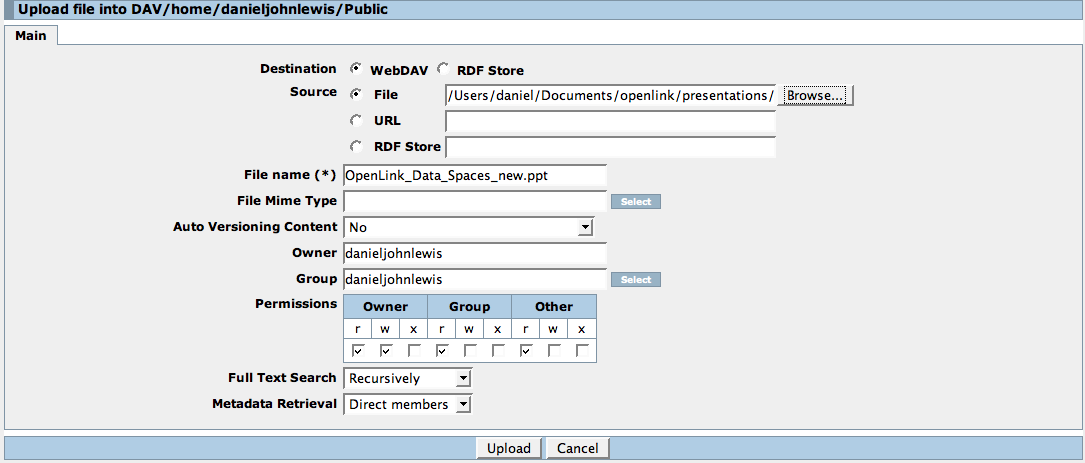Just read “Twine and Linked Data on the Semantic Web“, a blog post by Nova Spivack.
He says that Twine has a SPARQL endpoint, it’s just not open yet. He also says that it is able to consume Linked Data.
This is all good, however, even though it’s stated in the Twine Semantic Tour, application/rdf+xml fetching (using cURL) doesn’t work from command line:
curl -H "Accept: application/rdf+xml" https://www.twine.com/item/1sj51123-2g5
<html>
...
Now this comes up because of Unauthorised access, which is a real pain!
If you have logged in to Twine Beta then you can access the RDF from browser by going to: https://www.twine.com/item/1sj51123-2g5?rdf=
But I don’t really want to do that…. so my suggestion:
Make it entirely Linked Data compliant:
1. Use URIs as names for things
2. Use HTTP URIs so that people can look up those names.
3. When someone looks up a URI, provide useful information.
4. Include links to other URIs. so that they can discover more things.
(Quote from “Linked Data - Design Issues” by Tim Berners-Lee)
With Twine, if it were downloadable the database backend could then be powered by ODBC… allowing it to connect to any database management system including: MySQL, PostgreSQL or even the mighty OpenLink Virtuoso Universal Server.
More information is available about the awesome open-source platform-independent implementation of ODBC and X/Open specifications called iODBC.
Nova, remember: be open, use existing ontologies, link out, link in, take advantage of HTTP, and finally be meaningful!
This is the way to gain full benefit of the Linked Data web, and gain respect from users and developers of the Linked Data web. Interconnectedness is key.
(p.s. Nova… have you got a personal URI, if so, does it output FOAF based RDF?)
[update]
I forgot to say, the profile pages on Twine don’t even give you FOAF based RDF… which is really annoying.
- My profile on Twine (doesn’t return FOAF)
- My profile on Myopenlink (does return FOAF)
[/update]
[another update]
Tom Heath gives a bit more detail about some of the bad bits of Twine (in regards to the Linked Data issues) in his blog post titled “Twine and Linked Data“.
[/another update]



